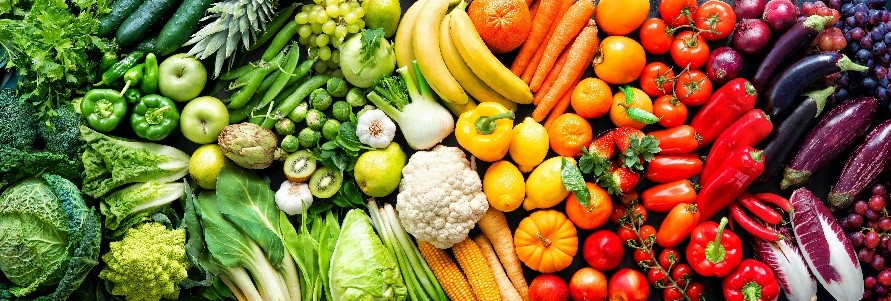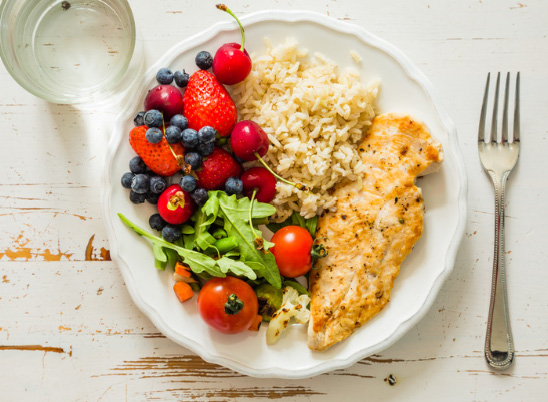June is National Fresh Fruit and Vegetable Month

What is the coolest vegetable?
A rad(ish)!
What better way to celebrate National Fresh Fruit and Vegetable month than with a rad(ish) joke. But all jokes a side, we are enjoying all things fresh fruit and vegetables this month and are here to share with you why fruits and vegetables are important for our health as well as some tips and tricks to help you increase your intake.
Even though June is ‘fresh’ fruit and vegetable month, frozen and canned options also provide a lot of nutrition and are great additions if fresh fruits and vegetables are not available. [Be cautious of added sodium and sugars in the frozen and canned options though!]
According to the Dietary Guidelines for Americans, nearly 80% of the United States population do not meet fruit consumption recommendation and nearly 90% do not meet vegetable consumption recommendations.
 Are you one of those that don’t eat your fruits and veggies?
Are you one of those that don’t eat your fruits and veggies?
The general recommendation is to fill half of your plate with fruits and/or vegetables at each meal. The exact number of servings that one needs from each depends on age, sex, and weight.
Fruits and vegetables are essential for good health and helps reduce the risk of chronic disease like heart disease, diabetes, and cancer. They provide many nutrients including dietary fiber, vitamin A, vitamin C, potassium, and folate, among many others. You get a lot of bang for your buck with fruits and vegetables because they are nutrient dense (meaning they have a lot of good for your nutrition) and lower calorie.
It is important to eat a variety of colorful fruits and vegetables every day. Vegetables are grouped into different categories based on their nutrients. The five groups are dark green; red and orange; beans, peas, and lentils; starchy; and other.
No one single fruit or vegetable provides all the nutrients we need. We must eat a variety of each every day.
Here are some tips and tricks to help you increase your fruit and veggie intake:
- Add a variety of fruit and vegetables to a smoothie. Try adding frozen banana, strawberry, mango and spinach together with yogurt and water for a tasty, nutritious, and easy breakfast or snack.
- Make a stir fry using a variety of colorful vegetables.
- Add additional vegetables to casseroles, mixed dishes, eggs, and
- Try cooking them a different way or use different seasonings. Try roasting, grilling, or eating raw.
- Cut up vegetables and fruit in advance and keep the refrigerator for easy snacking.
- Keep fruit on the counter where you can see it and it is readily available.
- When shopping, buy a new fruit or vegetable you haven’t had before. You might just find your new favorite food!
Do you have or care for young children who dislike or refuse fruits and vegetables? Try these tips:
- Remember, patience works better than pressure!
- Offer children a variety of foods and let them choose how much to eat.
- Children model behaviors. Be a good role model for children by eating fruits and vegetables yourself with meals and as snacks.
- Give children a choice. Instead of "do you want broccoli" ask "would you like broccoli or carrots?".
- Kids are more likely to eat food in which they help pick out or prepare. Depending on their age, children can help pick out produce at the store, clean, peel, or cut up fruit and vegetables.
- Children often prefer foods served separately. Try serving fruits and vegetables served separately rather than mixed.
Subscribe to our In Good Health monthly newsletter
We will send you more tips and tricks and recipe ideas for incorporating more fruits and vegetables into your diet!
